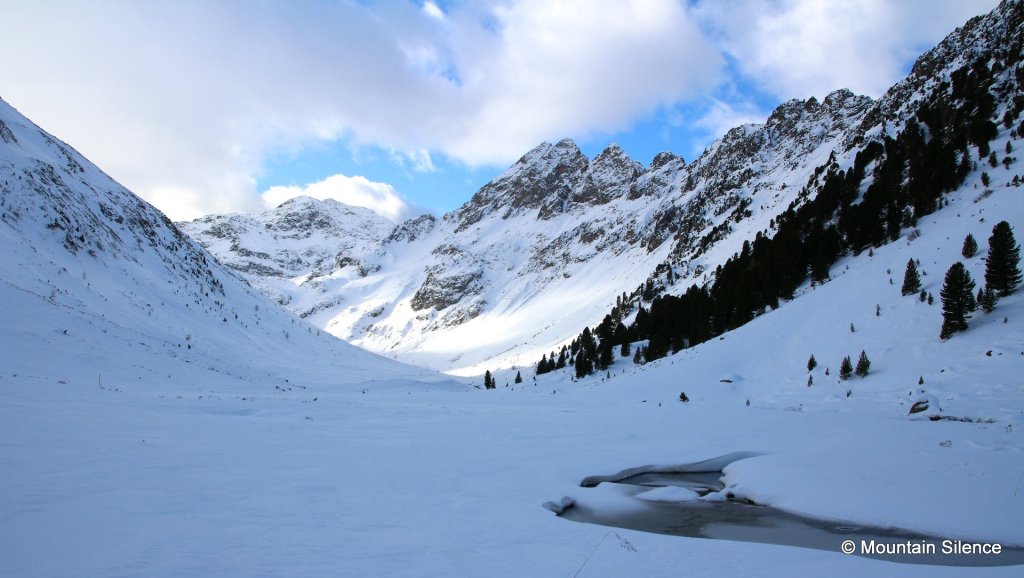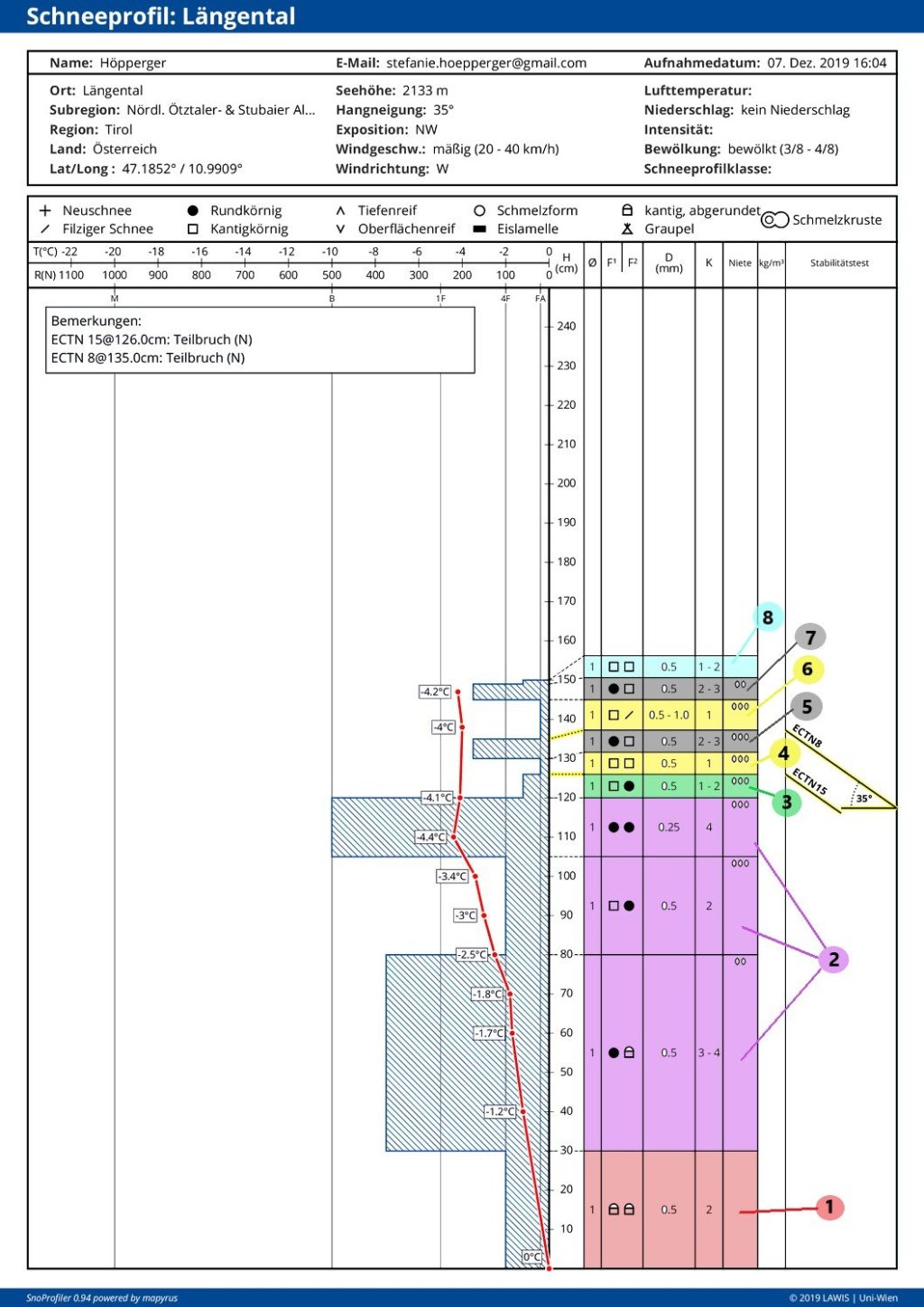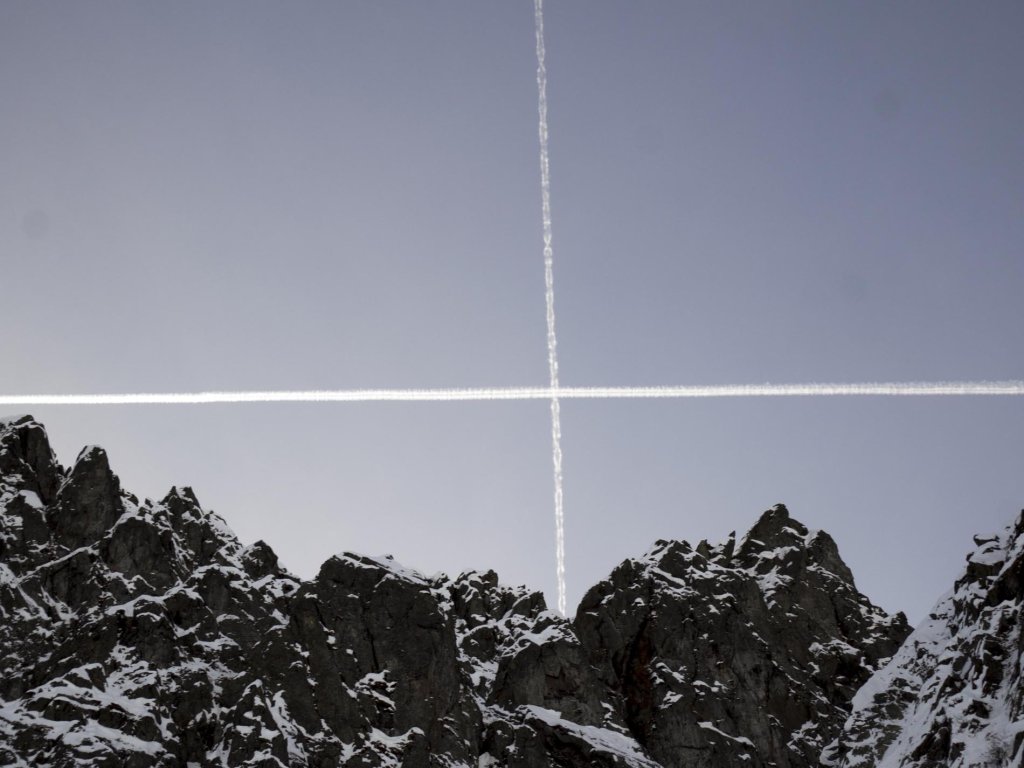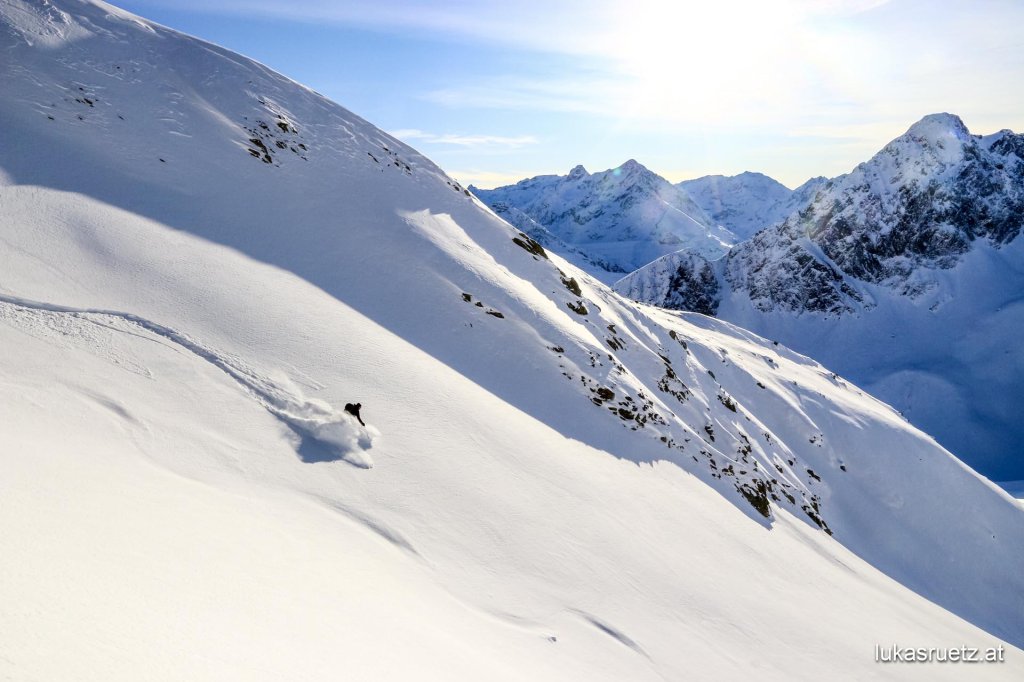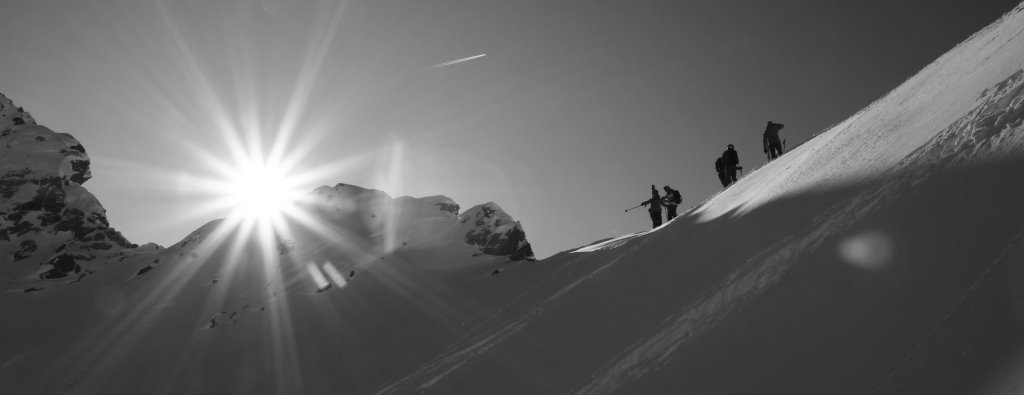Clear nights allowed the snow surface to cool down considerably, which favored the accumulating transformation. Angular crystals have formed in the upper 20 cm (fresh snow around 2.12.) of the snow cover. That's why it crunched so nicely when skiing recently, as if you were skiing on sugar.
This layer poses a certain problem after the fresh snowfall on 9 December and the following days. The bound fresh snow or drift snow came to rest on soft, angular layers and thus formed a weak layer.
Snow profile Längental from 7.12.19, 2133m, NW
Red
Rounded crystals lie close to the ground. This snow originates from the end of October - beginning of November.
The low temperature gradient in the lower layers favors the decomposing transformation. This means that the crystals transform more and more into round, small grains and create a good base. The layers close to the ground are generally negligible in this profile, as they would hardly be disturbable with a snow thickness of 150 cm.
Violet
The following layers are from the precipitation in mid-November and are very compact.
